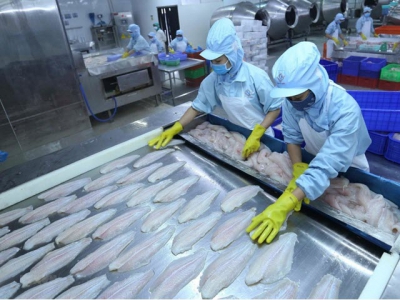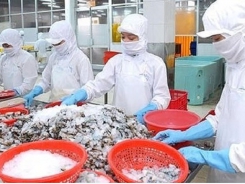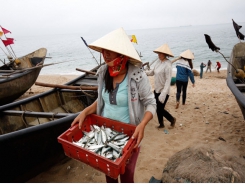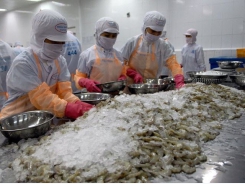Things go swimmingly for seafood exports to CPTPP

Since the Comprehensive and Progressive Agreement for Trans-Pacific Partnership (CPTPP) took effect earlier this year, the fishery sector has yielded initial positive results.
According to the Vietnam Association of Seafood Exporters and Producers (VASEP), Vietnam’s seafood exports to CPTPP member countries such as Japan, Canada, Australia, and Singapore have recorded positive changes.
Vietnam’s shrimp exports to the EU, the US, China and the Republic of Korea all recorded double-digit drops in the first four months of this year, while the Japanese market only saw a drop of 7.3 percent compared to the same period last year. Japan was Vietnam’s second largest shrimp importer during the January-April period, accounting for 19.2 percent of Vietnam’s total shrimp export turnover. Vietnam’s Tra fish exports to Japan also grew 38.6 percent in the first four months of this year, reaching US$8.58 million.
In the first four months of 2019, Vietnam’s shrimp exports to Canada reached US$37.6 million, an increase of 4.8 percent compared to the same period last year. According to VASEP, the CPTPP gives shrimp exporters an advantage in the Canadian market over rivals like India, Thailand and Indonesia, who are not members of the treaty.
Chile, another member, is also a potential market for Vietnamese shrimp thanks to its tariff reduction commitments on seafood products. In the first quarter of this year, Vietnam’s shrimp exports to Chile reached US$712,400, much higher than the US$45,500 in the same period in 2018.
Though Chile is still is a small purchaser, Tra fish exports to this market have also risen. With the import tax advantage of zero percent for frozen Tra and Basa fish fillets, through Chilean distribution channels, Vietnamese products will likely not only be consumed in this country, but also be introduced to other countries in the region.
According to VASEP, Vietnam’s participation in the CPTPP has opened doors for its seafood products to enter demanding markets.
In addition to opportunities, the CPTPP also poses challenges for Vietnamese businesses, which face numerous technical barriers, as well as strict quality standards and rules of origin. Therefore, Vietnamese businesses need to improve competitiveness and update market information to respond to changes promptly.
Vietnamese seafood will obtain significant advantages in the other 10 CPTPP members with many categories already securing high market share.
Có thể bạn quan tâm
Phần mềm

Phối trộn thức ăn chăn nuôi

Pha dung dịch thủy canh

Định mức cho tôm ăn

Phối trộn phân bón NPK

Xác định tỷ lệ tôm sống

Chuyển đổi đơn vị phân bón

Xác định công suất sục khí

Chuyển đổi đơn vị tôm

Tính diện tích nhà kính

Tính thể tích ao hồ



 Pangasius price slumps, farmers suffer serious loss
Pangasius price slumps, farmers suffer serious loss  Seafood exports nears 4 billion USD in first…
Seafood exports nears 4 billion USD in first…